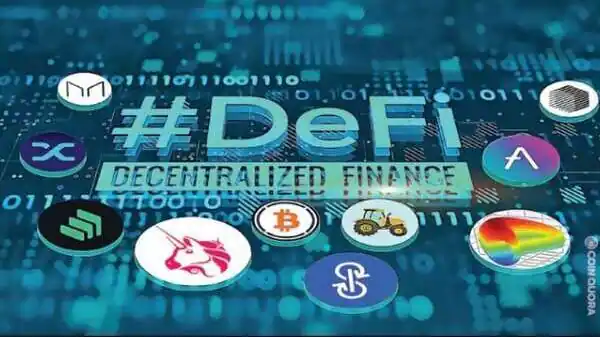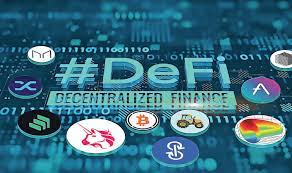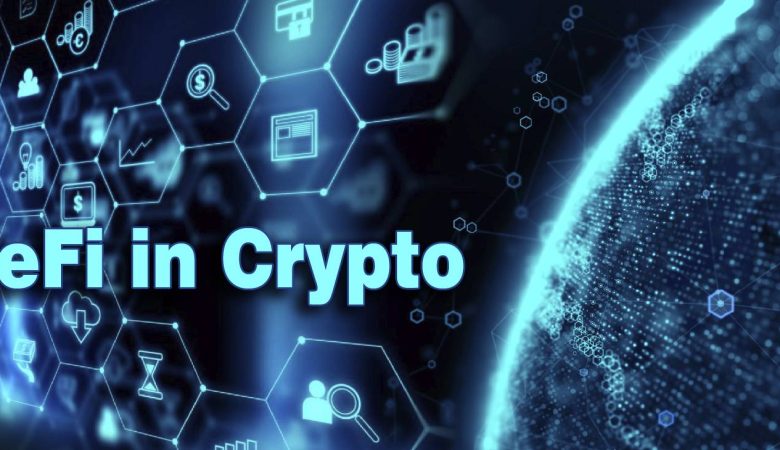Finance that is decentralized (DeFi):
Decentralized finance, or “DeFi,” is a rapidly growing movement in the world of cryptocurrencies and blockchain technology.
The term “DeFi” refers to a group of financial services and applications developed on decentralized blockchain platforms, especially Ethereum, with the aim of enhancing the usability, efficiency, and accessibility of traditional financial services for a larger global audience. DeFi’s guiding principles are as follows:
Decentralization: Decentralized and distributed blockchain networks are used by DeFi applications. This suggests that there is more than one organization or central authority overseeing the system. The rules and transactions are instead controlled by consensus processes and smart contracts.
Accessibility and Transparency: DeFi aims to provide financial services to anybody with an internet connection, cutting out the middlemen that banks and other financial institutions serve as. Users maintain ownership of their resources and data.
Interoperability: DeFi projects frequently rely on open standards and protocols to connect various apps and exchange data. Within the ecosystem, this interoperability promotes innovation and teamwork.
Transparency: Every transaction made on DeFi platforms is visible to the public and is recorded on the blockchain. Users can check the system’s integrity and audit smart contracts.
The DeFi ecosystem’s essential elements and services include:
Decentralized Exchanges (DEXs): are online marketplaces that don’t require a middleman to conduct cryptocurrency transactions between users. Uniswap, SushiSwap, and Curve are a few examples.
Lending and Borrowing: Through DeFi platforms, users can borrow assets with the provision of collateral or lend their digital assets in exchange for interest. Compound and Aave are two well-known loan platforms.
Stablecoins are digital currencies with a fixed value, frequently tied to a traditional reserve currency like the US dollar. In DeFi, stablecoins like USDC, DAI, and USDT are essential for lending and trading.
Users can receive rewards for supplying liquidity to decentralized exchanges and other DeFi protocols through yield farming and liquidity provision. In return for fees and tokens, assets are locked up in liquidity pools in this scenario. Yield farming entails maximizing the returns on these investments.
Financial Decentralization Oracles: Oracles enable DeFi applications to interface with real-world data by supplying smart contracts with external data (such as price feeds). Chainlink is a good illustration.
Asset Management: DeFi users have access to robo-advisory services, which automate portfolio management and investing techniques, as well as decentralized asset management.
Decentralized derivatives trading and prediction markets are provided by DeFi systems, allowing users to make predictions about the future costs of certain assets or occurrences.
Insurance: To shield customers from cyberattacks and smart contract vulnerabilities, certain DeFi protocols offer insurance products.
Due to its potential to upend established financial systems, broaden financial inclusion, and provide cutting-edge financial products and services, DeFi has attracted a lot of interest and adoption. Risks associated with it, meanwhile, include market volatility, regulatory ambiguity, and smart contract vulnerabilities.
It’s essential to do extensive research, comprehend the risks, and use caution before taking part in DeFi. When connecting with DeFi platforms, security precautions and regulatory compliance should also be taken into account.

How Does It Operate?
On the basis of decentralization, blockchain technology, and smart contracts, Decentralized Finance (DeFi) runs. Here is a detailed explanation of how DeFi functions:
Blockchain Platform: Ethereum is the most often used blockchain platform for DeFi due to its extensive smart contract features.Other blockchains like Binance Smart Chain, Solana, and Polkadot also host DeFi projects.
Smart contracts are self-executing contracts that have specified rules and conditions that are recorded in code. These agreements streamline financial services and exchanges in the DeFi environment, eliminating the need for intermediaries like banks or other traditional financial institutions.
Decentralized Applications (DApps): Decentralized Financial Institution (DeFi) applications, also known as DApps, are created on top of blockchain platforms and use smart contracts to offer various financial services. These DApps can feature yield farming protocols, lending and borrowing services, decentralized exchanges (DEXs), and more.
Digital Assets: As the main method of value transfer and collateral, DeFi relies on cryptocurrencies and other digital assets, such as stablecoins (cryptocurrencies with a stable value that are frequently tied to a regular currency). DeFi frequently makes use of well-known cryptocurrencies like Ethereum (ETH), Bitcoin (BTC), and stablecoins like USDC and DAI.
Users donate their assets to liquidity pools in decentralized exchanges (DEXs) and liquidity provision protocols. These pools enable decentralized trading by enabling users to exchange assets without relying on a central authority.
Due to DeFi’s openness and decentralization, new financial services have been developed, making them more accessible to a wider audience. Users should take precautions, do their homework, and be aware of any potential threats related to DeFi protocols. Operating inside the DeFi ecosystem also necessitates keeping up with security best practices and legislative advancements.



